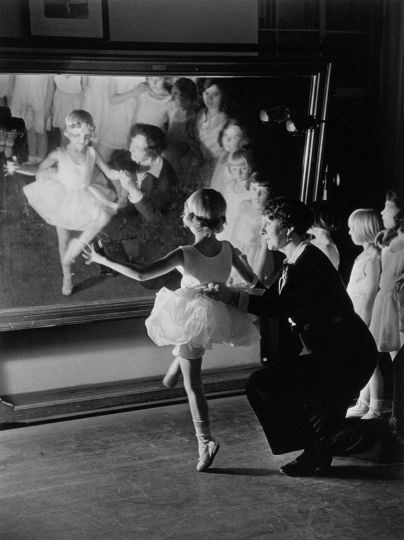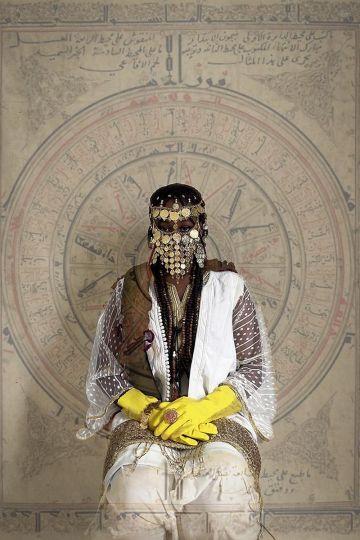La Maison de la Photographie in Lille presents, as part of its autumn programme and in the framework of “Renaissance” – Lille 3000, two exhibitions with a common theme: Detroit. The first is entitled “Detroit Defintion”, a series by Sara Jane Boyers that came out of the discovery of her native city and the second are the images by Guillaume Rivière who takes stock of this American city with “Detroit: Décomposition-recomposition”.
Sara Jane Boyers
Detroit Definition
I am an American photographer. I am a Californian. I am also from Detroit.
This is not unusual. Most North Americans (US & Canada) are from somewhere else, be it city, state or country. Thus we often ask each other “Where are you from?” We reply, but often we know nothing of our past.
Such was the nature of my relationship with Detroit, my birth city. It was a place where my father worked for a while and my mother traveled to marry him; where I and my brother were born and then – I at age one and my nine weeks old brother were quickly packed
into the family car and driven west – another American tradition – to the Los Angeles beach.
I first returned to Detroit in January 2011 to discover what it means to be “from Detroit.” Today, seven visits later, I cannot say that I “know” Detroit but what I have found since that first wintry visit has changed me even as Detroit changes as I write this.
2011 was a seminal moment in Detroit’s history when the world finally awoke to the even more growing disaster that was then Detroit, an American story for which we had to take responsability . When there, I first became part of an audience before a stage
set of gray skies, black ice and burned out buildings that shocked my Southern California soul; a dystopian landscape that forced a confrontation of the reality of the punctured American Dream, ironic since Detroit had been in the early 20th Century ,the representation of this dream, offering good jobs, a modest home and hope.
However, Act One opened straight away with the discovery of so many Detroiters, old-time and new, whose outlook was infused with resilience, ingenuity, persistence and renewal rather than one of resignation and loss. The stage transformed into vistas of the natural beauty of a grand city founded three centuries ago by the French on an historic border crossing point; of cultural treasures and events; and of buildings extraordinarily beautiful and symbolic of a still extant and glorious place.
I am thrilled to be in Detroit for this. How fortunate as well was my choice to explore this large and complex city following my father’s “footsteps” i.e., where he lived, worked and played. It is providential, for my “map” has led me to people and places where I – and others – may not have thought to go, a microscopic prism that has informed my view. Not all that I explore may be “newsworthy” but there residents are, daily navigating a broken city, working to mend and revitalize it.
I have already seen how a neighborhood is held together, “block by block,” and that a significant example has been the very block in the Northwest where my family home was located during my birth year and where I have gained a new “family by house.” This is not the only street where stand homes owned by the “ordinary” people of Detroit but it is characteristic of many: not in the worst of areas, not in the best but it is mine and I am honored its residents have so graciously welcomed me.
I have been privileged to gain access to businesses and classic old skyscrapers that scream of their history at a moment when Detroit was storied for its innovation, wealth and beauty and today, are being renovated and repurposed. I am discovering new social experiments:
urban gardens, art centers, a new bookstore, coffee shops or business enterprises and even the recent Whole Foods Markets, filled from those first weeks with a Detroit hungry for choice. I read the words of today – “opportunity,” “investment,” “renewal” – that speak of major steps forward, all the while hoping the new inclusivity does not pass over those who are there already and wondering how they too can participate.
I see people proud of their city, working together as much as they can, looking for a respite from real problems, but very active people . That is what Detroit is defining for me, re defining each visit: A city that is Alexandrian in its past, Ozymandian in the present, very
American in its struggle to retain hope and act for its future.
For me, a photographer of place not necessarily of people, there is a challenge in capturing this complex and extremely photographed city and its inhabitants. I have long been interested in visually capturing America’s stories from the perspective of presence, focusing on the detail of everyday living – often abstract in design and form – that tells its own tale about those who have passed through or might arrive and yet by their very real absence in the picture plane, asks us to explore further. Detroit demands the broader narrative.
There is also the element of personal connection, more than the fact that Detroit is for ever linked to me as a line on every official document I must fill in: my city of birth. Detroit represents something I could not define: an illusive personal history. Like my photographs, exploring Detroit is inspiring me to explore myself in a manner that I doubt could have happened had I not begun this project. My definition of Detroit and its need for change becomes a parallel examination as I abandon middle age for whatever comes next but even then hoping, like Detroit itself, that I remain vital and significant.
The icon of America’s 20th Century past, filled with the rise and fall of our industrial empire; our continuing struggle for race relationships and cultural well-being; is becoming a positive example for the future for us all, not only in the United States.
The renaissance is here to experience.
Guillaume Rivière
Detroit : Décomposition-recomposition
(texte d’Elisa Morère)
The motto of the former American car capital (“We hope for better things; It shall rise from the ashes”) resonates intensely in this ravaged landscape, as fascinating as it is frightening, even though some creative pockets embody hope. For some people the falling apart of “Motown” symbolised the dawn of a long-awaited renaissance.
Detroit? An American particularity. In fact the abnormality prowls about downtown, where the river defines the frontier with Canada: few cars, pedestrians or sirens. Few shops and empty skyscrapers succeed in creating an unreal atmosphere. Hard up, the city no longer attracts the A-list advertisements. The night there is dangerous,keep saying those you pass in the street as you search for (in vain) a restaurant. Antoine de Lamothe Cadillac, the Frenchman who founded Michigan’s principal city in 1701, is turning in his grave in front of these fragments scattered loosely over 340 square kilometres. In fifty years, Detroit has lost three quarters of its population and makes no secret of the fact that it is less than 700,00 today. Between 2002 and 2008, 400,000 jobs disappeared. Without income from taxes, asphyxiated, the city declared itself bankrupt in 2013, not able to repay debts of some 18.5 billion dollars. The humiliation was complete when Kwame Kilpatrick, who was mayor from 2002 to 2008, was sentenced to twenty eight years in prison for embezzling millions of dollars… The state of Michigan then imposed a director to manage the crisis. Who is brutally straightening out the accounts, cutting the subsidies to theatres and the police. From now on the municipality is trying to bring people back to the centre, or even to push them back out to the suburbs, in order to reduce the costs of managing a territory where no taxi dares to go.
The centre is not fun what about Midtown East, 5 minutes away, where the feeling of desolation has taken hold even more. The blocks of houses are dying. Water and electricity? A distant memory. The map of the wastelands – a third of the city – shows around 80,000 rickety places for destruction! Police stations, hospitals fire stations, libraries, schools, churches are closed in most of the neighbourhoods and are for sale or demolition. Cars trundle along between the chickens’ nests and the smashed-up pavements.
EXHIBITION
Detroit Definition by Sara Jane Boyers
&
Detroit : Décomposition-recomposition by Guillaume Rivière
Maion de la Photographie
28 rue Pierre Legrand
59000 Lille
France
http://www.sarajaneboyersphoto.com
http://www.guillaumeriviere.com
http://www.maisonphoto.com/agenda/riviere.php
















